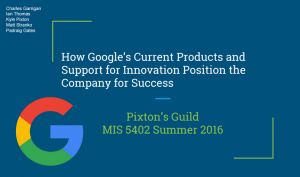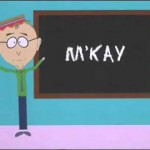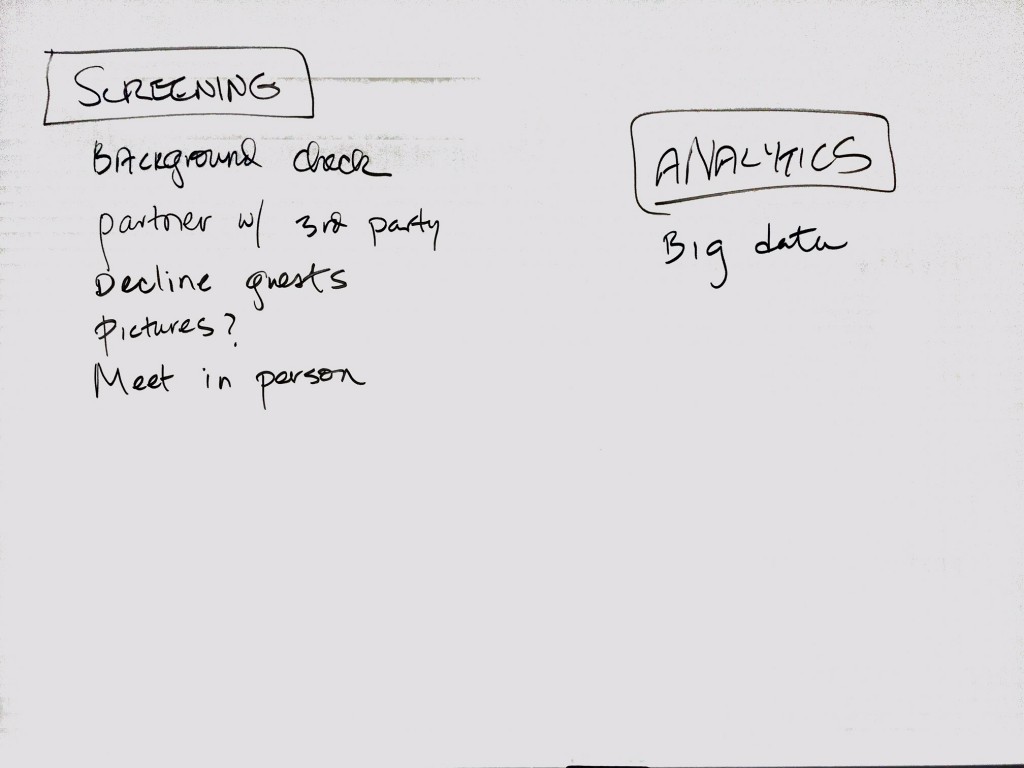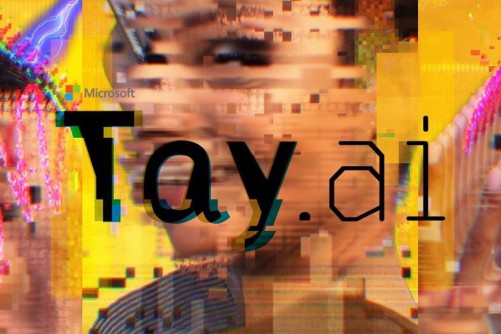Did Google Manipulate Search for Hillary?
Bassel asked a good question in class earlier this week. Are we too reliant on a single source of information? And, in that vain, are we approaching a sci-fi-esque era of technological singularity?
The following clip raises some really good questions about our information giant, Google. To be very clear, there is no definitive proof that Google intentionally curated any search suggestions, but if they did, what is the implication of that? What if Google had gone an extra step and curated actual search results, not just auto-complete suggestions? How does this reflect the mission to “organize the world’s information and make it universally accessible and useful?” How does it reflect the stated commitment to not “be evil?”
Could you make a case that Google is doing the right thing here?
Let’s say your a witch or a magician. Would you use your powers to tip the odds in someone’s favor?
What Makes A Good Data Visualization? — Information is Beautiful
Dedicated to distilling the world’s data, information and knowledge into beautiful, interesting and, above all, useful visualizations, infographics and diagrams.

Source: What Makes A Good Data Visualization? — Information is Beautiful
Edward Snowden: Here’s how we take back the Internet | TED Talk | TED.com
David McCandless: The beauty of data visualization | TED Talk | TED.com
Team Evaluations
All Teams:
An in-depth demonstration of the feedback process was absent from all of the presentations. For example, how has negative feedback made Google the superior search engine? What kind of behaviors were controlled by negative feedback? How does negative feedback continue to play a role in the world of SEO and keyword marketing? How does negative feedback factor in creating the world’s most ambitious artificially intelligent machine?
Team Pixton’s Guild:

Visually, your presentation was outstanding, and the best of the evening. Excellent use of the company icon on your title slide. You executed the contrasting heading font effectively. You have a clear and original title. You employ a strong graphic narrative style throughout. You are frugal with text and it pays off with impact. I thought your comparison of the Golden Rules to Maslow’s Pyramid was weird, but appreciated. It was interesting that you chose to omit the final slide. I am glad I asked you to finish because it turned out to be your best slide. Excellent analysis and juxtaposition of failures and successes. On your Enabling Innovation slide, I would have zoomed in on each icon as you were presenting it.
Team Pickle Backs:

Overall, I thought your team did the best job at presenting. Visually, your presentation is lacking graphic company collateral. However, your first 5 slides employ outstanding organizational simplicity. I wish you had maintained this aesthetic throughout (you proceeded to throw a lot of text in subsequent slides). Sara and Ian gave good background, touching on all critical points. I felt a nod to Porter’s 5 Forces. Erica, your moment about “our minds are ad-blockers” was a favorite of the evening. Bassel, your analysis of health research was excellent. Bryan, you gave a great, smiley pitch for the self-driving car at the end. It was apparent that you enjoyed being on each other’s team, and your approach seems to be in line with Google’s ethos: simple, fun, and effective.
Team Cool Kids:

Slide 1. Good use of current company logo throughout.
Slide 2. Good analysis of revenue model with breakdown of top products.
Slide 3. Good use of graphics.
Slide 4. Another team utilized the graphics on this slide, which is interesting. I don’t think they added much to the presentation.
Slide 5. Good analysis of the customer. The graphic here misses the mark for me.
Slide 6. Good analysis of the real product.
Slide 7. The recommendation is lacking an in-depth analysis of Google’s core strength and an integration of the company mission. How is your recommendation for collaboration software and project management software distinguished from current cloud services such as Google Drive? What kind of response would a clearer entry into the specialized software and SaaS markets elicit from incumbent companies like Microsoft? To what extent does Google need to adhere to its flagship search product?
Your team did a nice job presenting, although one of your team members did not engage with any content. Your presentation lacked an original title.
Tea M’Kay

Slide 1. Visually you had some great moments and some disappointing moments. You chose a great title image incorporating very current Google brand collateral, but your use and placement of text in Times New Roman throughout the presentation was inconsistent and, at times, a distraction (the company transitioned to a sans-serif at the time Alphabet was formed).
Slide 2. This slide had an image that I wanted to immerse myself in. The text became excess.
Slide 3. Good use of graphic and discussion of what Google knows (very AI wording). Pixton’s Guild used the same graphic but their execution was more effective.
Slide 4. I loved your discussion of John Wanamaker and remarketing (why not a picture of the building, too, as you’re discussing his shoppers?)
Slide 5. Paid Search: Your first sentence is perfect. The following sentences are either unclear or inaccurate.
Slide 6. Adequate Revenue analysis.
Slide 7. Good discussion of threats.
Slide 8. Excellent recommendations, and quite thought-provoking. You clearly know a lot about, and think a lot about this subject. The text overlapping the logo made me cringe.
Your team made a conscious choice to rely on Frank’s stage presence.
Team Anonymous

Thank you for stating your question at the beginning of your presentation. Your title slide features an outdated logo (the company transitioned to a sans-serif at the same time that Alphabet was formed). Subsequent slides all make use of the Chrome browser icon, not the Google company logo or icon.
Great discussion of Google’s business model with free and paid feedback loop.
Adequate Revenue analysis.
Excellent curation of fun facts.
Nice slide on customers. Excellent use and composition of relevant graphics.
Good discussion of Google’s real product.
There are a lot of stock images on the internet. Your conclusions image is cliché.
Team Tech Bees:

Slide 1. I liked Wai’s opening with the invention of ‘Google’ in our lexicon.
Slide 2. Other Profitable Products was an odd choice for the next slide, and could have utilized better graphics to convey all the text (Product Line logos, for example). The Google Fiber image was unnecessary (albeit the cute technicolor rabbit). Think of it this way: is Fiber a particularly interesting or surprising product line for Google? Their segue into the monitored home makes a much more relevant and interesting case.
Slide 3. Good analysis of Google’s Offerings for users, advertisers, and enterprises.
Slide 4. Great analysis of Product Interactions (the Google Core).
Slide 5. Revenue Model discusses AdWords and AdSense and makes a mention of feedback.
Slide 6. How Google Make Money was misspelled and didn’t really tell us anything new. It is interesting because two teams chose to incorporate this graphic.
Slide 7. Good analysis of the search business model.
Slide 8. You seem to mix up the principles behind AdWords and AdSense quite a bit in this slide.
Your team could have used a title slide. Your use of the Google logo was inconsistent throughout the slides (you used a footer template with Google’s pre-Alphabet-era serif font logo, while your content made repeated use of the current, sans-serif font logo. Having each member present some content served your team well.
Team #39

You did a nice job with structuring your presentation. You started with background highlights that made for a unique organizational structure. You touched on Google’s mantras as a corporation that strives to be ethical. Where your presentation could have been stronger is an analysis of whether Google’s two unique organizational features — dual class equity structure and an intentionally flat, fun, “not evil” ethos — are a strength or a liability for the company in the long run. What are some arguments against a dual class equity structure, especially in light of ventures into new markets? What are some ventures that might be inconsistent with Google’s imperative to not be evil? Overall, your recommendation was reasonable but a bit tangent, addressing more the issue(s) of Google’s unique corporate culture (perks, encouraging productivity by maximizing work time) and not addressing the more relevant question of their corporate structure. Visually the presentation was lacking and you used an outdated logo on all your slides.
Additional Observation: It was an interesting choice to not present as a team with some engagement from each member (only two of your team members took turns speaking). I think the desired effect of that choice was missed and the result was a little bland, as I wanted to hear from the other participants.
Airbnb Discussion Notes
Most Airbnb Rentals Go Perfectly. Then There Are These Horror Stories
Twitter taught Microsoft’s AI chatbot to be a racist asshole in less than a day | The Verge
This is the Microsoft AI experiment we talked about in class.
Source: Twitter taught Microsoft’s AI chatbot to be a racist asshole in less than a day | The Verge
Welcome to MIS 5402 : Technology and Innovation in the Age of Information
Course Overview
Organizations that strategically select, manage, and deploy digital business models can prosper in the global economy. Students will use systems and business process thinking to create and analyze strategies for technology-enabled organizational and industrial transformation. They will propose innovative solutions to relevant and complex problems facing organizations in the present day.
We will not use Blackboard for this class. Instead we will use this site which is hosted by community.mis.temple.edu and is built on WordPress, a world class open-source blogging tool. This will serve as the main communication and information resource for the course. Please refer to it often throughout the semester.
Coursepack and required readings
Please buy and download the (printable) HBSP coursepack available here.
Additional readings are posted on the course schedule.




